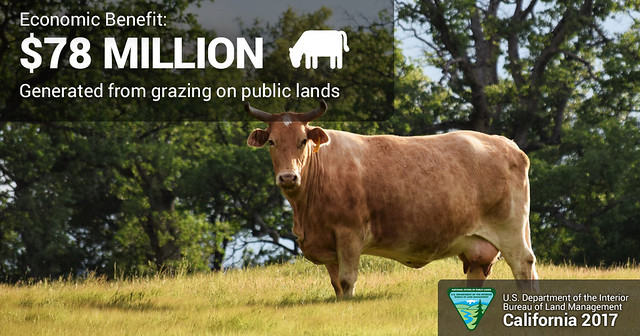California Rangeland Management and Grazing
BLM California administers approximately 665 active grazing allotments utilized by 553 grazing permittees/lessees (these numbers change annually). These allotments encompass about 6.1 million acres of public land. Typically the BLM authorizes around 472,000 animal unit months (the amount of forage that a cow and her calf or five sheep use per month or about 600 pounds of dry forage by weight). Of the grazing fees collected, between 25 and 50 percent of those fees are returned to the BLM for use in constructing and maintaining projects such as fences, wells, cattle guards, seedings, and spring developments.
Grazing in California is managed using Standards and Guidelines for Grazing Administration as outlined in the 43 Code of Federal Regulations (CFR) Subpart 4180. The Northern California and Central California Districts Standards and Guidelines have been approved by the Department of the Interior. Approval of California Desert District Standards and Guidelines are pending, they are using the Fallback Standards and Guidelines outlined in Subpart 4180 of the Federal Regulations.
Major issues facing California’s livestock grazers are wild horses and burros, threatened and endangered species habitat, weeds, water quality, drought, and fire.
The Appropriations Act of 2012 (Public Law 112-74) provides for grazing permittees/lessees in the California Desert District area of management to voluntarily relinquish their grazing as part of a mitigation package to offset impacts to public lands from solar projects, wind energy projects, highways, or other ground disturbing construction projects. Once these grazing authorizations are relinquished they are permanently removed from the lands available for livestock grazing.

